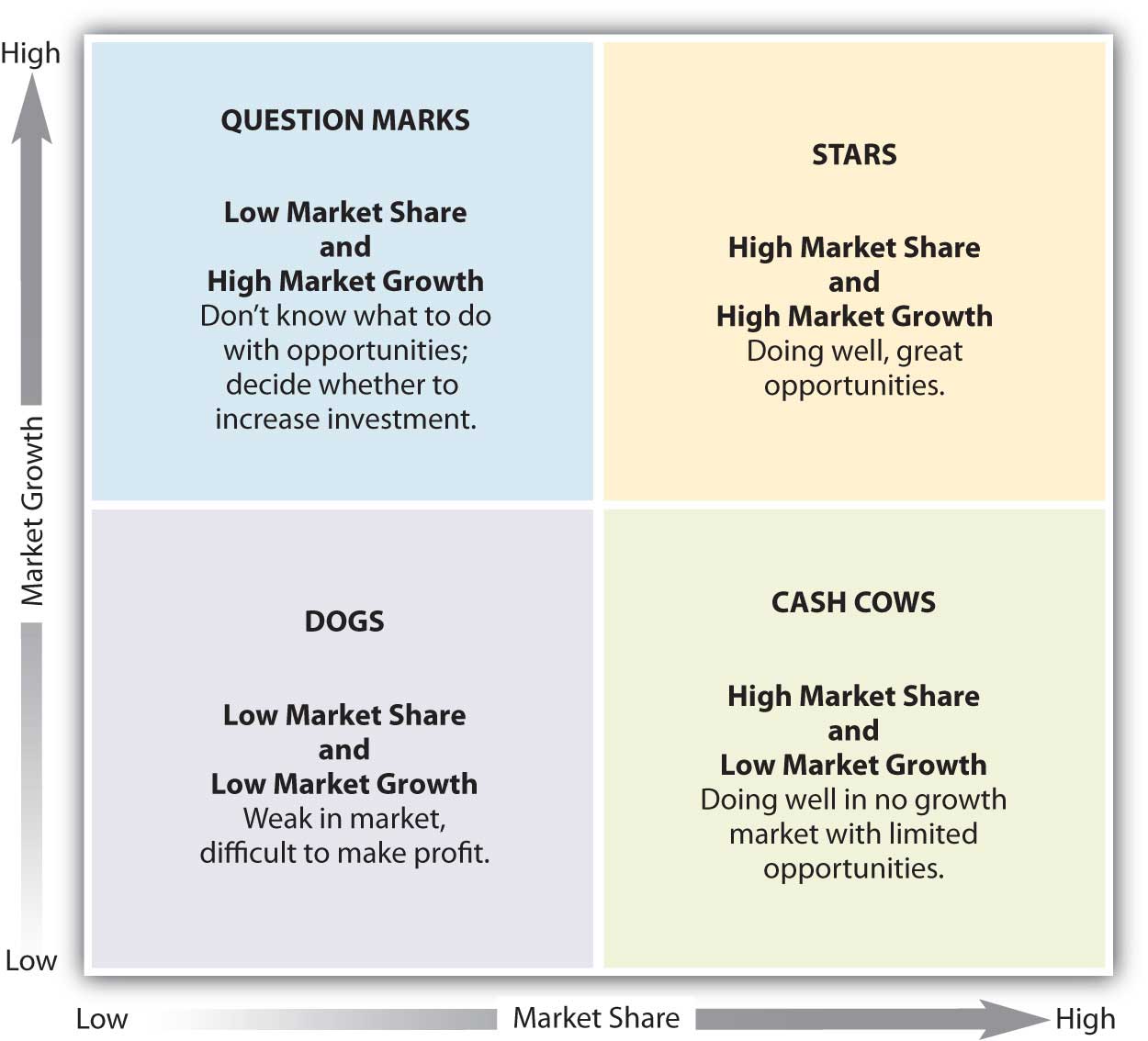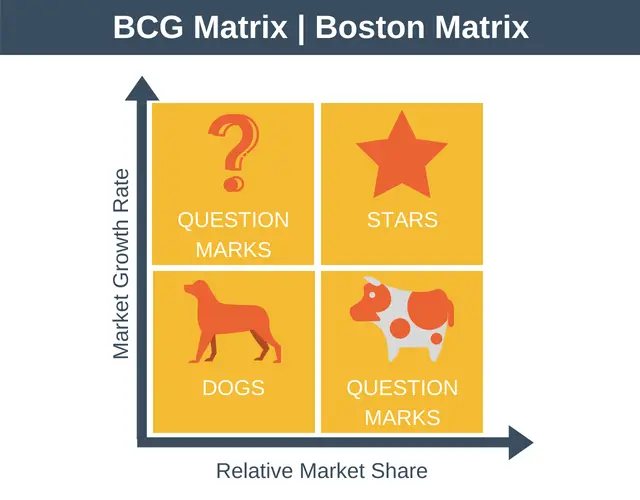

In order to realise the full potential of problem children, management needs to develop new business prudently, and apply sound project management principles if it is to avoid costly disasters. Problem children have a relatively low market share in a market that is growing quickly, often due to the fact that these are new products/services, or that they are yet to receive recognition by prospective purchasers. The other axis on the matrix is the market growth rate – which is either growing quickly or the market is mature where it will grow slowly or may even have stopped growing altogether. This is done by considering the relative market share, which for the company with the largest share (market leader) means comparing to the next biggest player and for smaller players (market followers) it means comparing their share to the leader. Management must consider each product or service marketed, and then position it on the matrix.

It has two axes, namely relative market share (meaning relative to the competition) and market growth. The matrix offers an approach to product portfolio planning. More importantly, the model can also be used to assess the strategic position of strategic business units (SBUs), and in this respect it is particularly useful to those organisations which operate in a number of different markets and offer a number of different products or services. The Boston Consulting Group matrix, which incorporates the concept of the product life cycle, is a useful tool which helps management teams to assess existing and developing products and services in terms of their market potential. There is a fundamental need for management to evaluate existing products and services in terms of their market development potential, and their potential to generate profit.

An introduction to professional insights.Virtual classroom support for learning partners.Becoming an ACCA Approved Learning Partner.


 0 kommentar(er)
0 kommentar(er)
